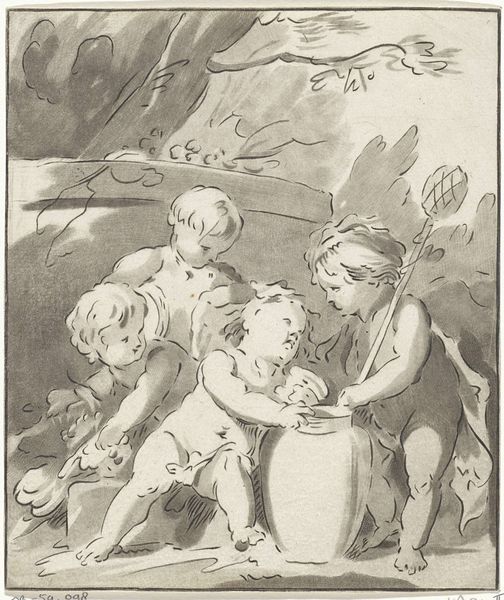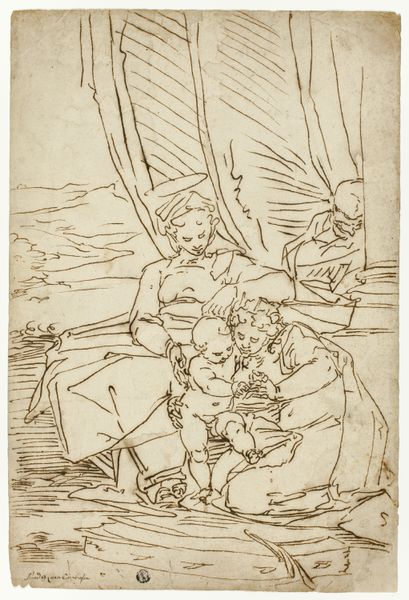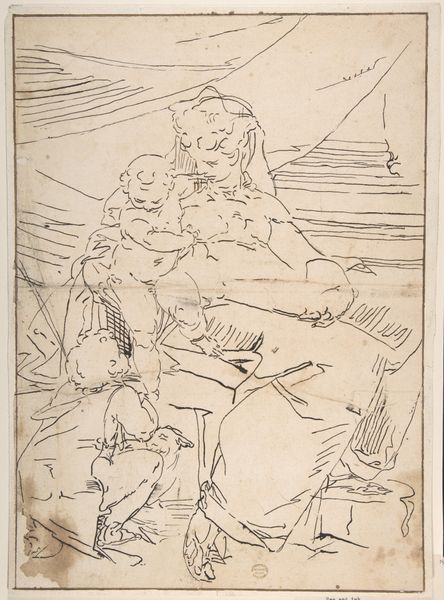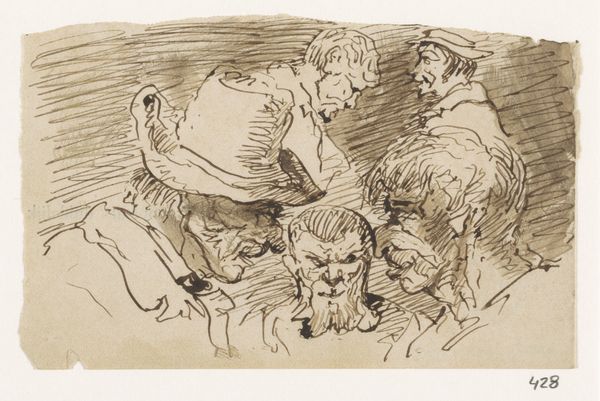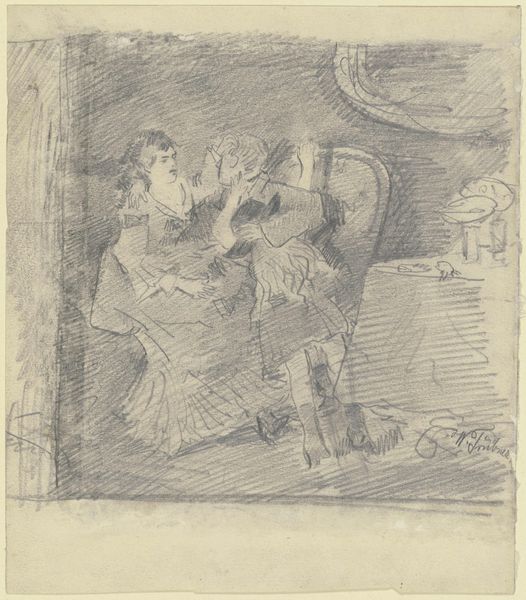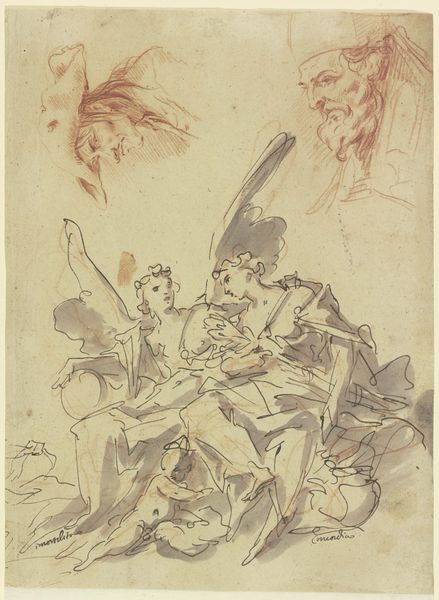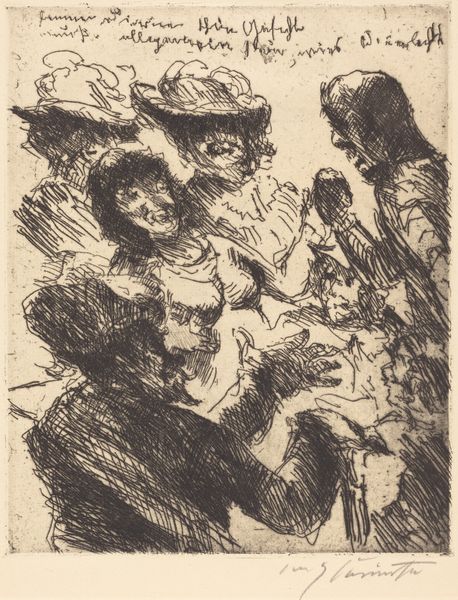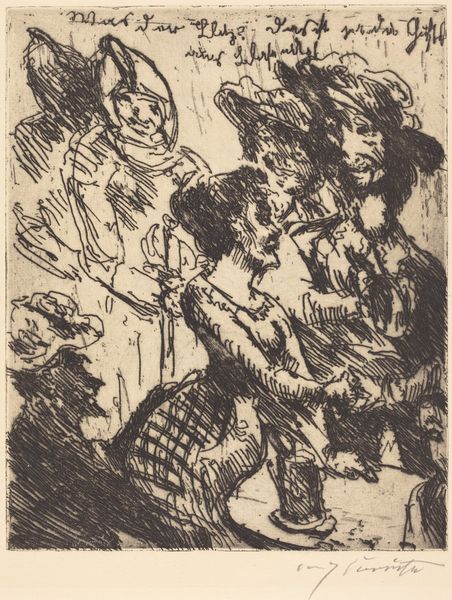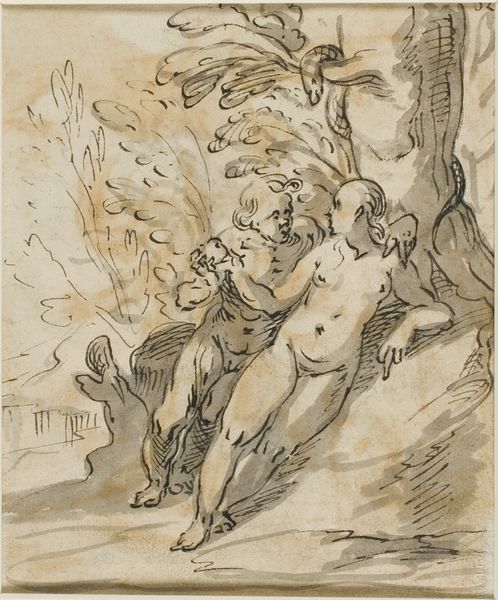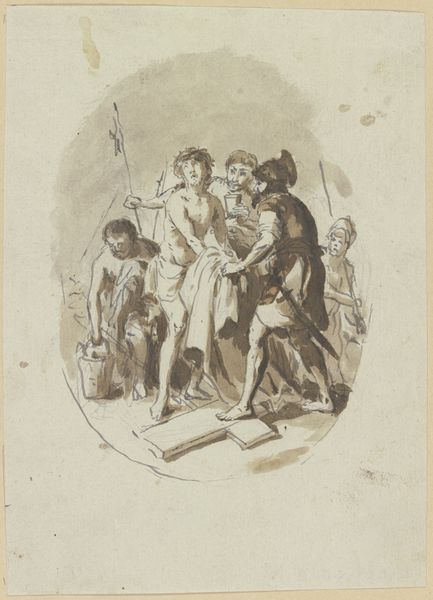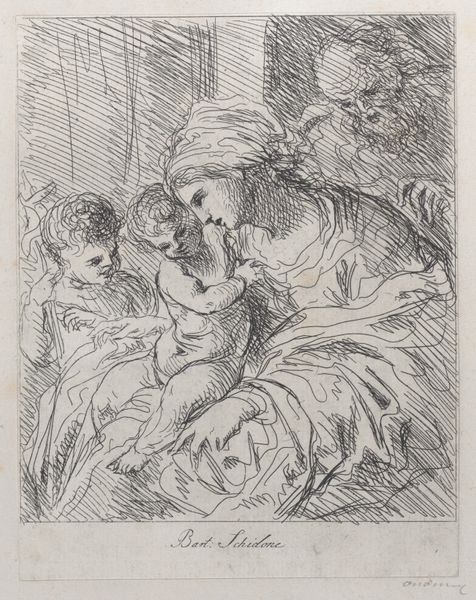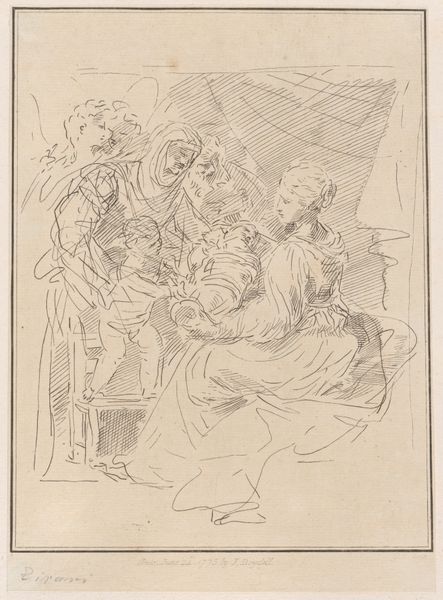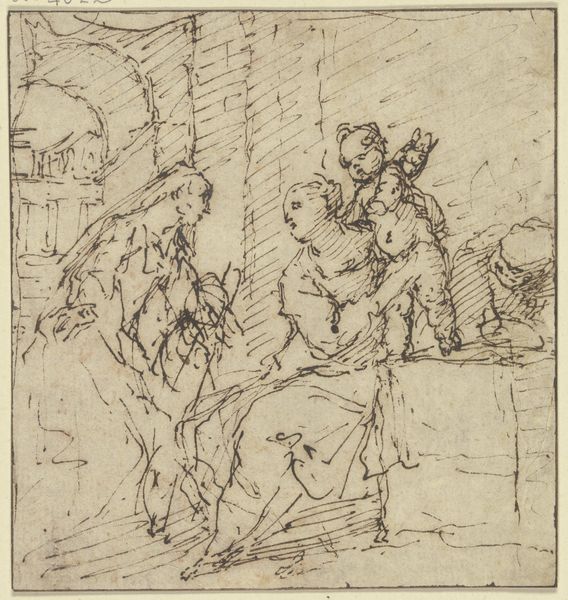
drawing, watercolor, ink
#
drawing
#
allegory
#
baroque
#
caricature
#
figuration
#
watercolor
#
ink
#
15_18th-century
#
portrait drawing
#
genre-painting
#
watercolor
Copyright: Public Domain
Curator: This delicate watercolor and ink drawing, entitled "Vier Amoretten bei einer Vase," attributed to Jacob de Wit, presents a playful scene of four cherubic figures clustered around a vase. What’s your immediate take on this work? Editor: It’s… chaotic, almost absurd. A whirlwind of chubby limbs and vague gestures around an overly large, rather plain vase. There’s a certain dissonance between the cherubic figures and the object of their attention. Curator: Precisely. De Wit, a prominent figure in 18th-century Dutch art, specialized in decorative painting, particularly using a grisaille technique to imitate stucco reliefs. He had a flourishing studio practice producing drawings that served as models for larger-scale commissions. This drawing, then, is likely a preparatory study. Editor: So it’s a material investigation – exploring how to translate three-dimensional architectural details into drawings to be mass-produced through De Wit's studio, like a pattern for a larger industrial machine. What would this have been decorating – some wealthy merchant's home? Curator: Probably! The market for these types of allegorical representations and decorations was exploding among affluent citizens and aristocratic patrons. These visual flourishes signalled their wealth, cultural sophistication, and connection to classical ideals through commissioned decorative schemes for their homes and civic buildings. Editor: And those ideals, filtered through cherubic representations of amoretti, become easily palatable. Are we supposed to believe in some sincere emotional sentiment here, or is it just décor, a consumable product delivering social credibility? The use of watercolor adds to the ephemerality—a quickly produced image that is just as quickly consumed. Curator: That tension is critical. These drawings become symbolic of aspiration but also commodities embedded in the developing market for luxury goods. Consider also the division of labour inherent in the studio practice. De Wit provided designs, but numerous artisans would have executed his vision, blurring lines between artist as genius and workshop producer. Editor: The whole thing feels transient—laborious drawings made to be mass-produced for these brief architectural and societal moments. Thanks for the background, I can now almost feel the weight of 18th-century commerce in those cherubic fingers! Curator: A reminder of art’s place in history isn’t always pretty, is it? Thanks, too, for helping unpack all that.
Comments
No comments
Be the first to comment and join the conversation on the ultimate creative platform.
